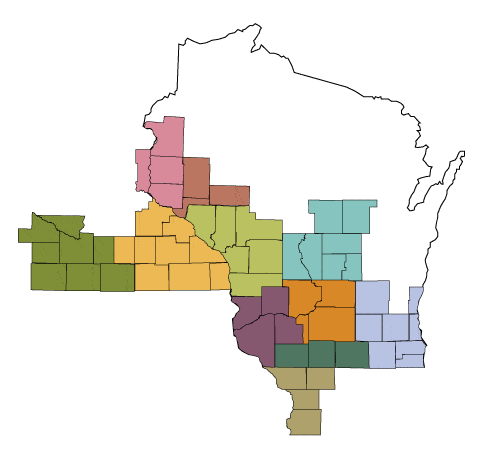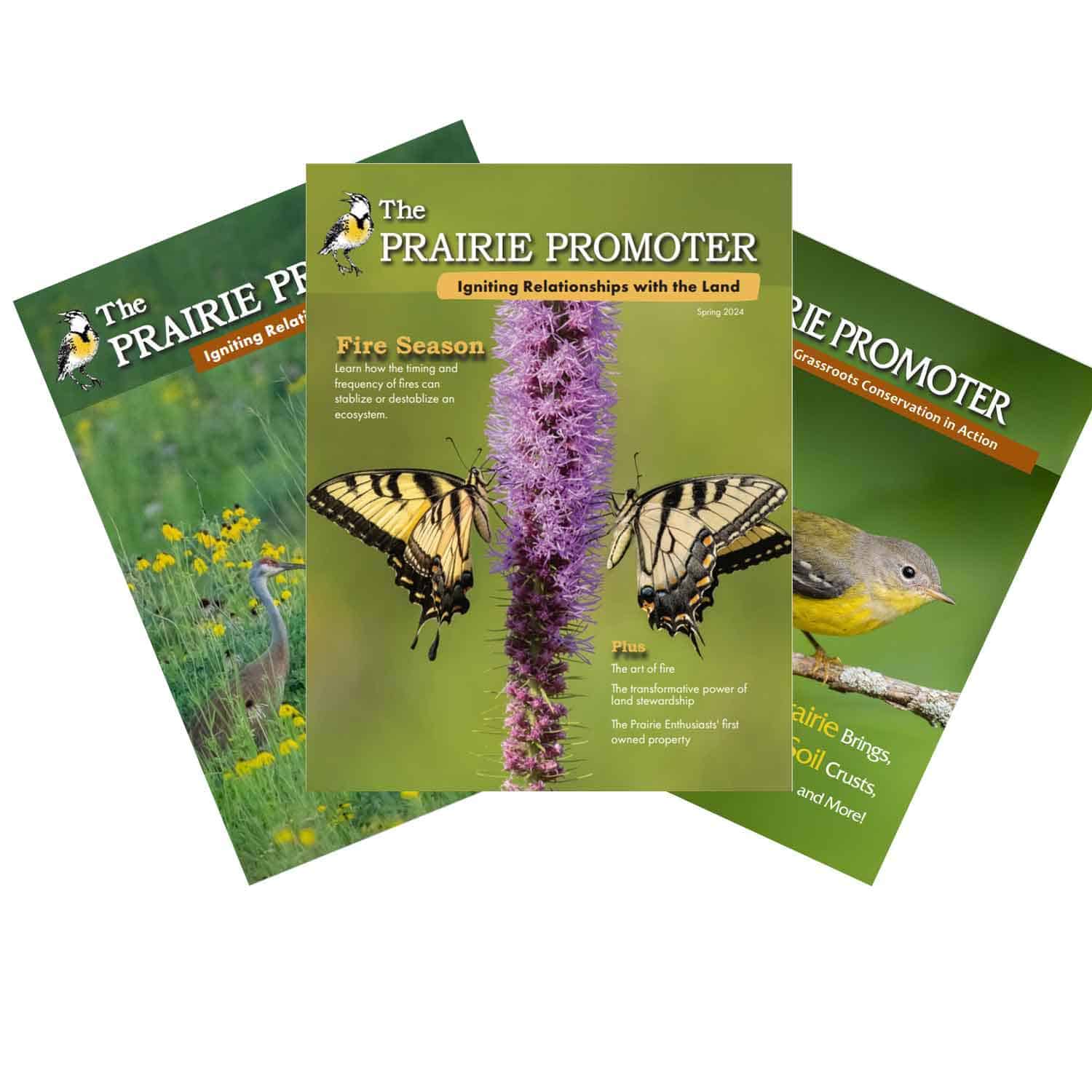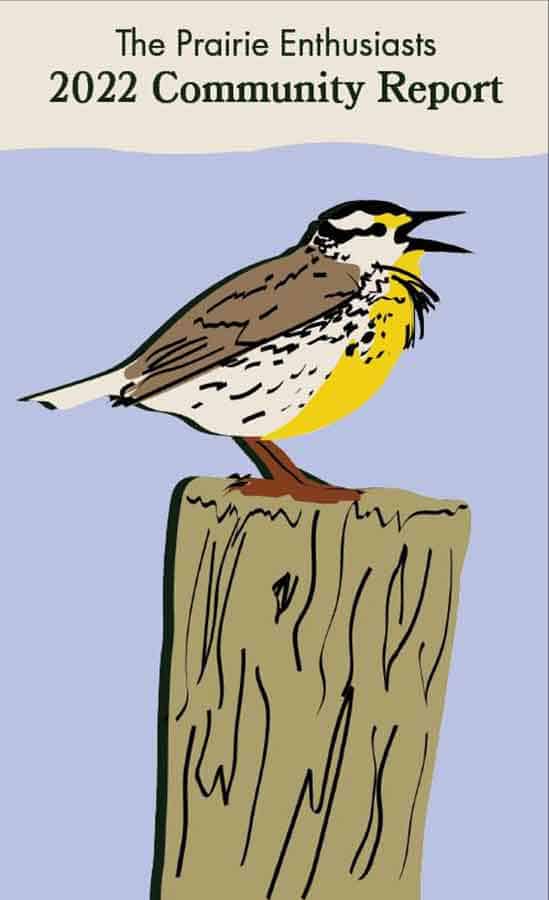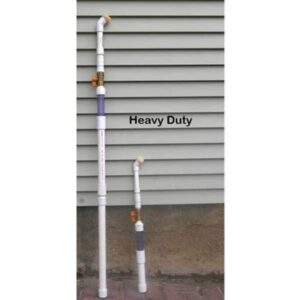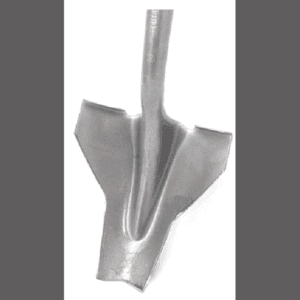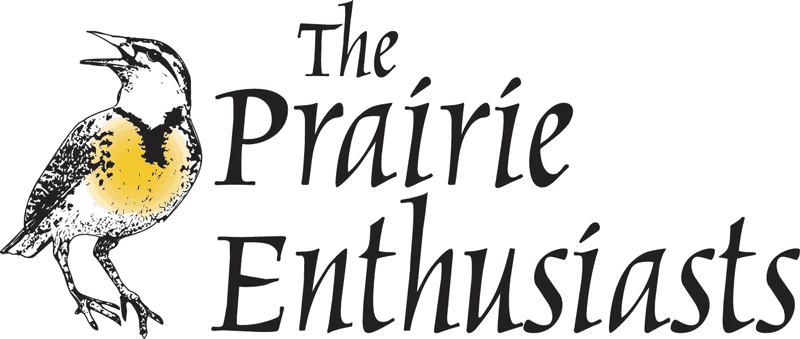Who We AreDavid Myers Advancement Associate...
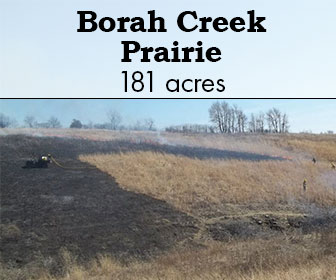
Borah Creek Prairie
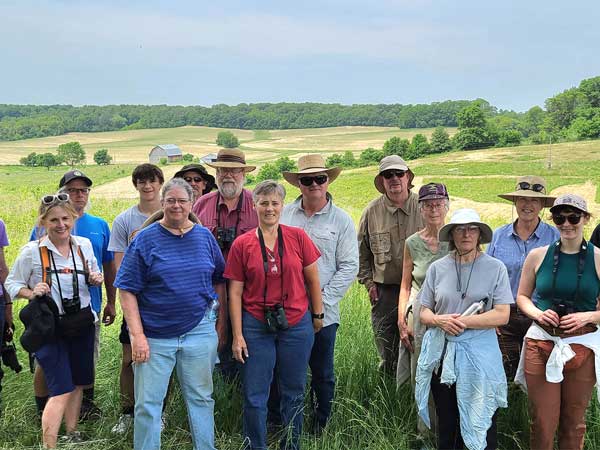
Borah Creek Prairie
In 2009, The Prairie Enthusiasts, Mississippi Valley Conservancy, and Driftless Area Land Conservancy, with funding from the U.S. Fish and Wildlife Service and the WI DNR Knowles-Nelson State Stewardship Fund, procured 138 acres of this site near Fennimore, WI. It was immediately designated a WI State Natural Area. In 2010, title was transferred to The Prairie Enthusiasts. It has since been managed and cared for by TPE. In 2013, another 43 acres were added to the preserve for a total 181. The preserve consist of 10 acres of high quality remnant dry and dry-mesic prairie, 17 acres of former cropland planted to prairie vegetation, and 5 acres of overgrown oak savanna. Most of the rest of the preserve is former pasture with varying amounts of native prairie vegetation that survived the grazing, including a large population of the Federally Endangered prairie bush-clover. Surveys of this property have found such rare prairie specialist as woolly milkweed, prairie Indian-plantain, Hill’s thistle, wild quinine, and prairie turnip. Rare and declining grassland birds detected using the area include upland sandpiper, eastern kingbird, brown thrasher, dickcissel, eastern meadowlark, grasshopper sparrow, and bell’s vireo.
SITE STEWARDS
SOUTHWEST WISCONSIN CHAPTER
ACCESS & DIRECTIONS
From the west side of Fennimore, head south on Rodger Hollow Road for 2.7 mi. Turn right onto Mt. North Road. Go west for 0.8 miles. Turn right (south) on Mt Ridge Road. Go 1/3 mi to the access road and parking lot to Borah Creek Prairie on the right, at 11949 Mount Ridge Road.
Google Map
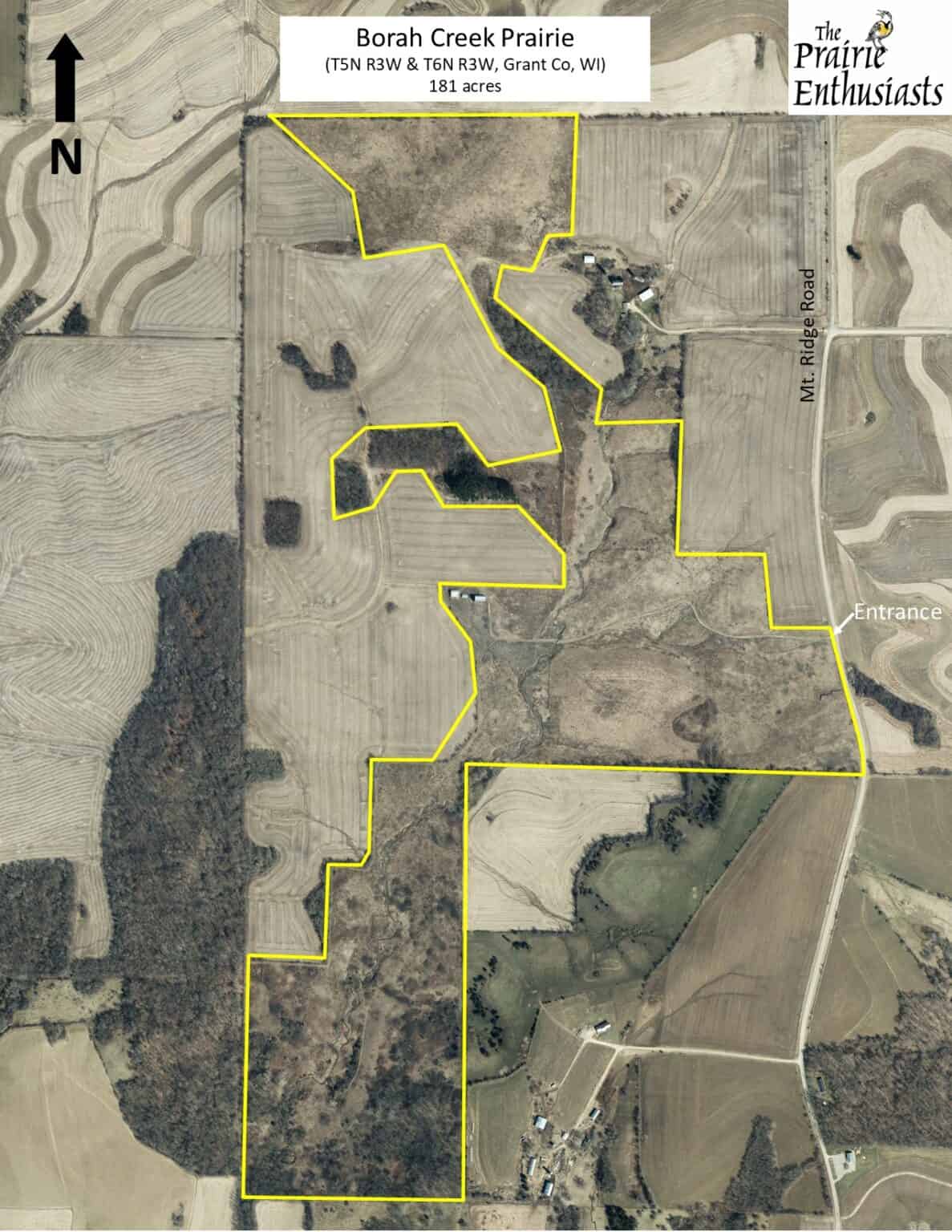
Usage Policies
Allowed:
- Outdoor Recreation
- Hunting (for all species, no permit or reservation required)
- Trapping (for all species, no permit or reservation required)
Not Allowed:
- Collecting Plants, Seeds, Rocks or Animals without permission from The Prairie Enthusiasts
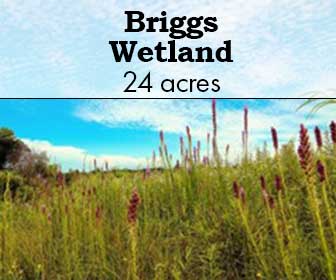
Briggs Wetland
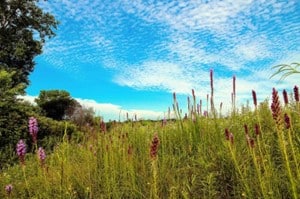
Photo credit: Jerry Newman
Briggs Wetland
Briggs is a 24-acre parcel of wet prairie and wetland (with artesian springs). Briggs was purchased from the Reorganized Church of Later Day Saints in 1994 by the Natural Land Institute of Rockford, Illinois. The buy was assisted through cooperative fund raising by the Prairie Bluff Chapter and a big grant from the Wisconsin Department of Natural Resources.
Briggs was transferred to TPE in 1996. We routinely burn Briggs Wetland, and skirmish the invasive aliens like buckthorn (Rhamnus cathartica) and Canada thistle (Circium arvense). We have about 4 acres of tilled field we are planting to prairie on the south side.
This property is considered difficult to hike; there are no trails on the prairie.
SITE STEWARDS
FRED FAESSLER
608-214-3203
ACCESS & DIRECTIONS
Briggs Wetlands lies on the west side of Brostuen Road between Beloit-Newark Road and Cleophus Road northwest of Beloit in Rock County, Wisconsin. State highways 11 and 213 are the nearest main arteries for visitors. There is no parking lot, but you can park along the east side of Brostuen Road. Access is by foot-traffic only. There are two springs near the sign on the east edge of the property. A wet prairie contains many tussock sedges (Carex stricta) which make hiking difficult.
Google Map
Description & Significance
The flora of Briggs Wetlands is highly diverse and includes typical wetland species.
An artesian spring emanates from a shallow, sandy-bottomed pool near the east edge of Briggs Wetland, and the rapid-running brook that leaves the pool is about 24-inches wide and flows west toward Raccoon Creek. This stream is very clear, and it never freezes, although nearest to the springs it is full of non-native watercress.
Among the conservation biologists who have studied Briggs Wetlands (mostly during the 1990s) were Prairie Enthusiast Rob Baller, Michael Jones and Rachel Cough of Natural Land Institute, UW entomologist Andrew Williams, Wisconsin Herbarium curator Ted Cochrane, Trish Roberts of The Nature Conservancy, and Richard Newsome of Beloit College.
Notable Plants
- marsh marigold (Caltha palustris)
- golden alexanders (Zizia aurea)
- meadow rue
- cotton grass
- mountain mint (Pycnanthemum virginianum)
- bluejoint grass (Calamagrostis canadensis)
- Turk’s cap lily (Lilium michiganense)
- prairie blazing star (Liatris pycnostachya)
- Riddell’s goldenrod (Solidago riddellii)
- turtle head (Chelone glabra)
- bottle gentian (Gentiana andrewsii)
- and at least 18 species of sedges.
Species Suggestive of a Fen Community
- Muhly grass (Muhlenbergia richardsonis)
- edible valerian (Valeriana edulis)
- star sedge (Carex echinata)
- Kalm’s lobelia (Lobelia kalmii)
Natural History
Briggs Wetland is part of a larger tract of wet prairie, sedge meadow, fen and shrubland along the East Fork of Raccoon Creek that has been designated a Wisconsin State Natural Area to recognize the quality and rarity of this natural community. Briggs Wetland contains a perennial bubbling artesian spring that flows over a sandy bottom a few hundred meters to the southwest, where this stream joins Raccoon Creek. The east fork is one of the few trout streams in Rock County, hosting native brook trout subject to catch & release regulations.
Waterfowl that nest in the Raccoon Creek corridor include Wood Ducks, Mallards and Blue-Winged Teal. Other migratory birds found in the wetlands are Green-Winged Teal, Gadwall, Widgeon, Kingfisher, Kingbird, Sedge Wren, Swamp Sparrow, Willow Flycatcher, Northern Harrier, Common Yellowthroat, Virginia Rail, Sora Rail, Great Blue Heron and Sandhill Crane.
Protected land nearby Briggs Wetland is 28 acres to the northwest owned by the Green Rock Audubon Society and 33 acres to the southwest owned by Beloit College (Newark Road Prairie) that is a dedicated State Natural Area.
Usage Policies
Allowed:
- Hiking
- Hunting (all species; no permit or reservation required)
- Birding
Not Allowed:
- ATVs, Snowmobiles, or other Motorized Vehicles
- Camping
- Horseback Riding
- Picnics
Ownership History
According to a historical plaque on the east side of Brostuen Road, the site has special religious significance to the Church of Jesus Christ of Latter-Day Saints and is named in honor of Jason W. Briggs (1821-1899), an early follower of the religion that was founded in 1830 by Joseph Smith Jr. in New York. After Smith’s death by a mob in 1844 in Illinois, the leadership was contested.
“On November 18, 1851, while praying for guidance (on the prairie near this site) Briggs received a startling revelatory experience. His record of that experience became the foundation of what soon came to be called the New Organization. The Wisconsin branches at Newark, Beloit, Waukesha and Yellow Stone, together with others in Northern Illinois united to reorganize the church in 1852. Briggs and other interim leaders held the scattered groups together through the rest of the 1850’s. Several early conferences of the church were held on a campsite around a spring across the road from this site.”
By the 1990s the church had re-purchased the Briggs farm on both sides of Brostuen Road. In 1994 the church reduced the sales price of this wetland to a non-profit conservation group, the Natural Land Institute of Rockford, Illinois, with the stipulation that it be named Jason Briggs Wetland after the patriarch of that reorganized branch of the LDS church. In December of 1996 the Prairie Enthusiasts bought the property from NLI, with one-half of the appraised value paid from the Wisconsin Nelson-Knowles Stewardship Fund.
Management Activities by the Prairie Enthusiasts
Recent management activities by Fred Faessler and other volunteers have focused on removal of buckthorn and willows from the areas south and east of the wetlands, which are remarkably free of brush and weeds, and the creation of a permanent firebreak. Prescribed burns have been infrequent, with some portions burned in 1995, 1996, 2000, 2007 and 2011.
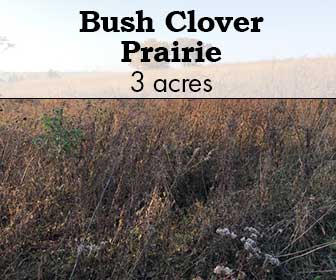
Bush Clover Prairie
Bush Clover Prairie
More information coming soon!
SITE STEWARDS
ACCESS & DIRECTIONS
Description & Significance
Natural History
Volunteers
Usage Policies
Ownership History
Management
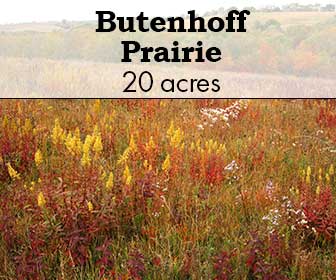
Butenhoff Prairie
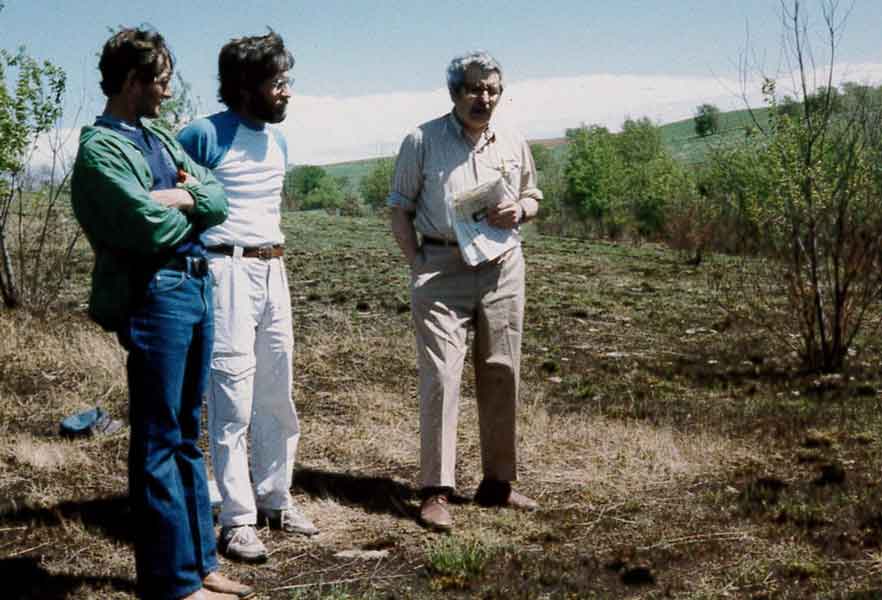
Butenhoff Prairie
Butenhoff Prairie is a 19.5-acre broad-back hill in rural Green County. The Green County Conservation League purchased the hill from Harrison and Marion Butenhoff in 1988, and TPE bought the property in 2005. The remnant prairie sod still contains the original vegetation that greeted the first settlers in Green County in the late 1820s.
Two state listed plants are present. Hill’s thistle (Cirsium hillii) and prairie Indian plantain (Arnoglossum plantagineum) are both listed as Threatened in Wisconsin by the Department of Natural Resources. A third plant, prairie turnip (Psoralea esculenta) is shown on old plant lists but has not been seen recently.
This property is considered hard to hike as it’s a long walk in; there are no trails at the site.
The photo at the above was taken May 15, 1988 at the dedication of Butenhoff Prairie. From left: Kim Christen, president of the Green County Conservation League, John Ochsner and Dr. Hugh Iltis
ACCESS & DIRECTIONS
Located roughly 1/3 mile north of the intersection CTY FF and Ladwig Road, located in the southeast quarter of Section 5 of Sylvester Township (T2N, R8E) in Green County. There is no easy access to this site, no fire number, no marked entrance lane or parking lot. Instead we have a 20-foot wide driveway easement north from County FF, between Dutch Hollow and Ladwig Roads that follows fence lines approximately two-thirds of a mile to the base of the broad hill. It is not recommended that visitors attempt to take passenger cars off-road to the site. When we have work days or field trips we meet along County FF and take 4-wheel drive trucks, which can navigate the hills, wet spots and steep climb up onto the limestone ridge.
Google Map
Description & Significance
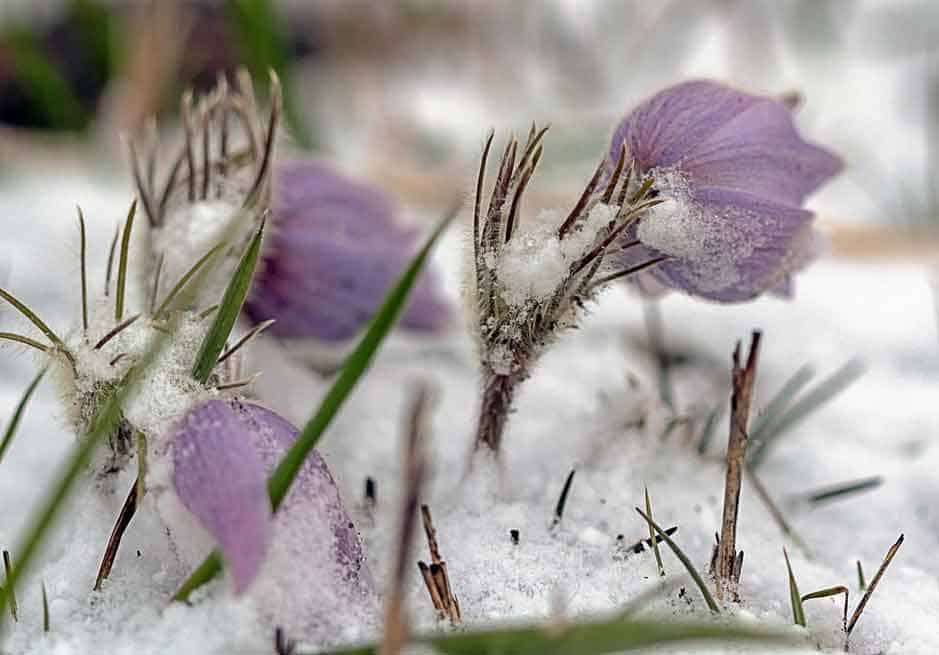
Photo credit: Jerry Newman
The property is dry to mesic prairie, dominated by the short grasses – little bluestem (Schizachyrium scoparium), side oats gramma (Bouteloua curtipendula) and prairie dropseed (Sporobolus heterolepis), with some big bluestem (Andropogon gerardii) and Indian grass (Sorghastrum nutans). It is rich is forbs, especially, asters and goldenrods. The property is an irregularly shaped polygon of eight sides with a narrow band of trees and brush around the north, west and south sides.
Butenhoff Prairie is significant in that its thin, rocky soil has prevented most of it from being plowed, although it most likely has been grazed by horses, sheep and cattle. Flint, chert and other small chunks of limestone and dolomite rocks are present near the surface of the bluff, forming a cap over sandstone slopes that in turn lie above level, fertile ground. There is a barb-wire fence along the east border of the property, and the other three sides are a brushy woodlot, especially where it is steep on the west and south edges.
Forty years ago when this land was first found to be remnant prairie, upland sandpipers were common nesting birds. The state-listed regal fritillary (Speyeria idalios) was once seen. However, since that time much of the surrounding area has been converted to housing and agricultural, reducing available grasslands from several hundred acres to a mere 20 acres. Formerly open areas have grown up the trees and brush. Eastern meadowlarks, bobolinks, grasshopper sparrows, field sparrows and dickcissels are still found nesting here most summers.
Butenhoff Prairie features several small plum groves, which we protect from fire, plus hawthorns and the native Iowa crab.
Usage Policies
Allowed:
- Outdoor Recreation
- Hunting (for all species, no permit or reservation required)
Ownership History
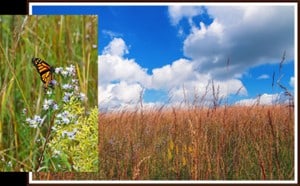
Photo credit: Jerry Newman
The preserve was purchased in January, 1988, by the Green County Conservation League from Harrison and Marian Butenhoff. It was subsequently sold in 2005 to The Prairie Enthusiasts. It is owned outright in fee simple by TPE, with a legal easement from County FF through two parcels of land.
It was pure serendipity that this was ever preserved. This land was owned by Harrison Butenhoff, a Monroe businessman who was a member of the Green County Conservation League. In the 1970s he contacted the Green County conservation people with the idea of planting pine trees on his property. The tree-planter was another member of the league, Gary Eldred, who was also a prairie enthusiast. Eldred informed Butenhoff that he owned an unusual piece of Green County – prairie – and this rare ground would be lost forever if it were planted to trees. So, over the next several years, arrangements were made to sell the land in 1987 to the Green County Conservation League. Within a few years, the league realized that a better fit would be for ownership and management to be transferred to the newly organized Prairie Enthusiasts.
The original protection of this property coincided with the publication of Rudy’s Hill – The High Point in the Valley and A View of Life Beyond the Horizon by Manuel Conrad Elmer, whose memoir of growing up in Dutch Hollow was written as he approached his 100th birthday in 1986. His stories of learning the birds and bees, flowers and trees from his Swiss-born grandfather while they tramped the land surrounding what we now call Butenhoff Prairie, lends charm and literary history to the property.
“Boots got the idea that M.C. Elmer’s Rudy’s Hill included his hill prairie,” remembers Gary Eldred, “and I think that clinched the deal for him to sell the land to the league. He wanted it preserved.”
Management
The first burn at this site was conducted in the spring of 1988 by the league, many of whom were also Prairie Enthusiasts – Eldred, John Ochsner and Gary Felder. This burn was held at night and attracted large numbers of spectators, whose cars lined County FF to see the rare sight of a prairie afire at night. On the day before the transfer of title was to be celebrated by TPE in 1993, the league inadvertently set fire to the prairie, so that on dedication day there were no flowers to be seen, only blackened soil. Dr. Hugh Iltis was The Guest Speaker that day in 1993, and the prairie enthusiasts had to travel to nearby Sulzer Prairie to see any spring flowers.
Early efforts by both the league and The Prairie Enthusiasts to restore the prairie to its original condition did not include herbicide use on the cut stumps, so that all of the cherry, walnut, elm and honeysuckle quickly re-sprouted. Management techniques had improved by 2009, and in recent years all the invasive trees and most of the brush have been removed – permanently this time. Plants introduced by the league include compass plant, pale purple coneflower, wild quinine and rattlesnake master.
Tom Mitchell, the site steward, has organized work parties since 2009. Work parties are held periodically during three seasons; our access is generally impassable during winter due to snow, ice or muddy conditions.
Seasonal work at Butenhoff Prairie emphasizes the control of weeds and brush during the spring and summer months. Non-native plants of lesser concern are the sweet clovers, wild parsnip and wild carrot, which are managed by hand when present in small patches and mowed when found in larger patches. Trees and brush have been removed from a former fence line on the northern boundary.
The southeastern portion of Butenhoff Prairie has an infestation of the non-native leafy spurge (Euphorbia esula), a perennial that is native to Europe and Asia. It is deep-rooted with milky sap in all parts of the plant. In Wisconsin, it is a restricted plant –an invasive this is already established in the state and has the potential to cause significant environmental or economic harm. Leafy spurge is one of five “noxious” weeds in Wisconsin, and according to the Invasive Plants Association of Wisconsin (IPAW), it can quickly create monocultures, excluding native vegetation and reducing wildlife habitat value. We have used bio-controls – flea beetles – to reduce the prevalence of leafy spurge.
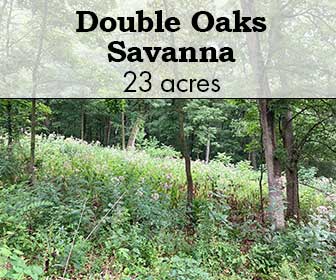
Double Oaks Savanna
Double Oaks Savanna
Double Oaks Savanna was gifted to TPE by Alice and Walter Mirk in 2012. The 23 acres contains remnant and restored prairie, oak savanna and oak woodland. The rugged terrain is home to a number of rare species including purple milkweed (Asclepias purpurascens), prairie Indian plantain (Arnoglossum plantagineum), jeweled shooting star (Dodecatheon amethystinum), pickerel frog (Lithobates palustris), and prairie ring-necked snake (Diadophis punctatus arnyi).
ACCESS & DIRECTIONS
From the east, go to the intersection of Highway 133 and County Road C west of Woodman. Proceed west on County Road C 4.7 miles to the rock quarry on the right., where we will congregate. From the west, go to the intersection of Highway 18 and County Road C, a few miles east of Prairie du Chien. Drive east on County C for 7.8 miles. Just past the settlement of Millville you will come to the rock quarry on the left.
Google Map
Usage Policies
Allowed:
- Outdoor Recreation
- Hunting (for all species, no permit or reservation required)
Not Allowed:
